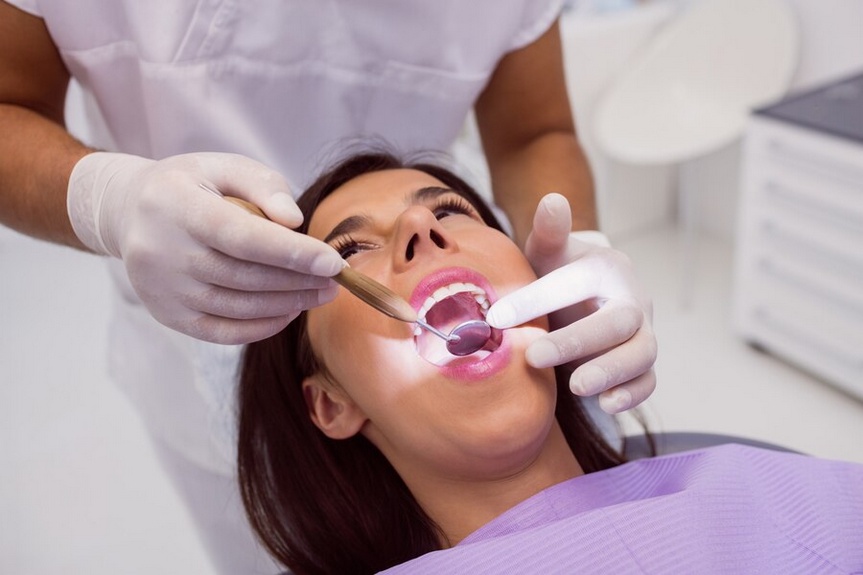Introduction
A bright, radiant smile is often considered a symbol of health, confidence, and beauty. In pursuit of this ideal, many individuals turn to cosmetic teeth whitening procedures to enhance the appearance of their smiles. Over the years, teeth whitening has evolved from traditional methods to advanced techniques, driven by scientific research and technological advancements. Understanding the science behind cosmetic teeth whitening is essential for making informed decisions about the procedures available and their potential benefits.
The Anatomy of a Tooth
Before delving into the science of teeth whitening, it is crucial to comprehend the structure of a tooth. Each tooth consists of several layers:
-
Enamel: The outermost layer of the tooth, enamel, is the hardest and most mineralized tissue in the human body. It protects the underlying layers from decay and damage.
-
Dentin: Beneath the enamel lies the dentin, a yellowish tissue that makes up the bulk of the tooth's structure. Dentin is less dense than enamel and contains microscopic tubules.
-
Pulp: At the center of the tooth is the pulp, which contains nerves, blood vessels, and connective tissue. The pulp nourishes the tooth and provides sensation.
Understanding the composition of the tooth is essential for comprehending how teeth whitening procedures work and their potential effects on dental health.
Causes of Tooth Discoloration
Tooth discoloration can occur due to various factors, both intrinsic and extrinsic:
-
Extrinsic Stains: These stains affect the outer layer of the tooth (enamel) and are typically caused by consumption of pigmented foods and beverages, such as coffee, tea, red wine, and certain fruits. Additionally, smoking and poor oral hygiene can contribute to extrinsic stains.
-
Intrinsic Stains: Intrinsic discoloration occurs within the tooth structure, often as a result of factors such as aging, trauma, exposure to certain medications (e.g., tetracycline antibiotics during childhood), or excessive fluoride intake during tooth development.
Understanding the underlying causes of tooth discoloration is crucial for determining the most appropriate teeth whitening approach for each individual.
The Science Behind Teeth Whitening
Teeth whitening procedures primarily work by either removing surface stains or bleaching the tooth structure to lighten its color. The two main methods of teeth whitening are:
-
Surface Whitening: This approach targets extrinsic stains on the enamel surface through mechanical or chemical means. Abrasive toothpaste and professional dental cleanings are examples of mechanical surface whitening, while whitening toothpaste and mouth rinses contain chemical agents such as hydrogen peroxide or carbamide peroxide to help dissolve stains.
-
Bleaching: Bleaching involves the use of peroxide-based agents to penetrate the enamel and dentin, breaking down stains and altering the tooth's intrinsic color. Hydrogen peroxide and carbamide peroxide are the most commonly used bleaching agents in teeth whitening products.
Mechanism of Action
When a peroxide-based whitening agent is applied to the teeth, it breaks down into oxygen radicals, which penetrate the enamel and dentin. These oxygen radicals react with the molecules causing discoloration, breaking them down into smaller, less pigmented fragments. As a result, the overall appearance of the tooth is lightened, producing a brighter smile.
Professional vs. Over-the-Counter Whitening
While over-the-counter (OTC) whitening products are readily available, professional teeth whitening treatments administered by dentists typically yield more significant and longer-lasting results. Professional whitening procedures involve higher concentrations of bleaching agents and may incorporate light or heat to accelerate the whitening process.
Additionally, dentists can customize the whitening treatment to suit the individual needs and address any existing dental conditions, ensuring optimal results with minimal risk of adverse effects such as tooth sensitivity or gum irritation.
Safety Considerations
Although teeth whitening is generally considered safe when performed under professional supervision or according to manufacturer instructions for OTC products, certain precautions should be observed:
-
Consultation: Before undergoing any whitening procedure, it is advisable to consult with a dentist to assess oral health and determine the most suitable treatment approach.
-
Protection: Special precautions should be taken to protect the gums and soft tissues from exposure to the whitening agent, as contact can lead to irritation or chemical burns.
-
Moderation: Overuse of whitening products or excessive frequency of treatments can lead to tooth sensitivity and enamel damage. It is essential to follow recommended usage guidelines and avoid excessive whitening.
-
Pre-existing Conditions: Individuals with untreated dental issues, such as cavities or gum disease, should address these concerns before undergoing teeth whitening to avoid exacerbating existing problems.
By prioritizing safety and seeking professional guidance, individuals can achieve their desired results while minimizing the risk of complications associated with teeth whitening procedures.
Conclusion
Cosmetic teeth whitening has become increasingly popular as individuals seek to enhance the aesthetics of their smiles. Understanding the science behind teeth whitening, including the structure of the tooth, causes of discoloration, and mechanisms of whitening agents, is essential for making informed decisions about treatment options.
Professional teeth whitening procedures, administered under the supervision of a dentist, offer effective and long-lasting results with minimal risk when compared to over-the-counter products. By prioritizing safety, seeking professional guidance, and following recommended usage guidelines, individuals can unlock their brightest smiles and enjoy the confidence that comes with a radiant grin.
In conclusion, the science of cosmetic teeth whitening continues to evolve, driven by research and technological advancements, offering individuals the opportunity to achieve a smile they can proudly share with the world.


No comments yet